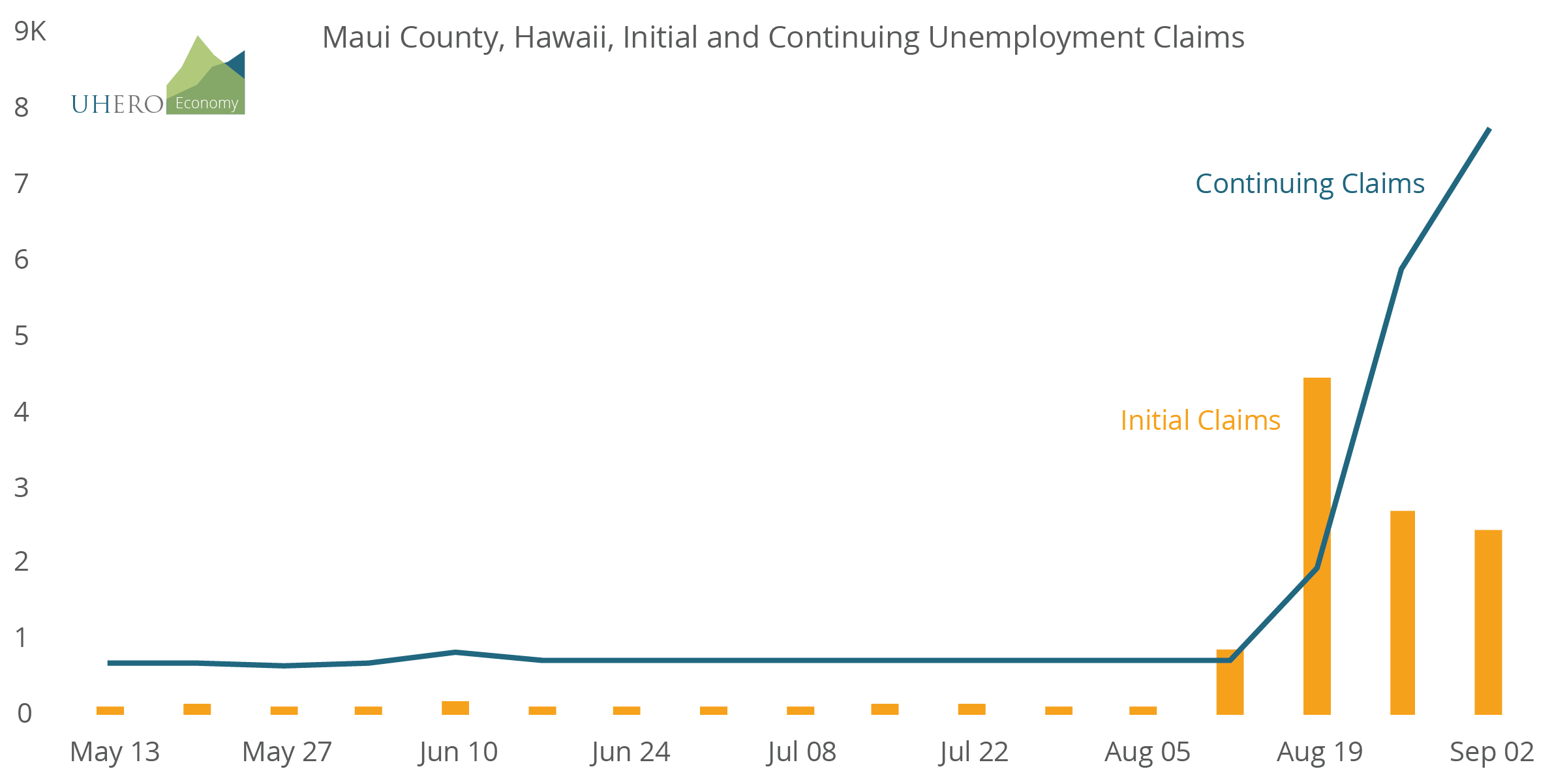BLOG POSTS ARE PRELIMINARY MATERIALS CIRCULATED TO STIMULATE DISCUSSION AND CRITICAL COMMENT. THE VIEWS EXPRESSED ARE THOSE OF THE INDIVIDUAL AUTHORS. WHILE BLOG POSTS BENEFIT FROM ACTIVE UHERO DISCUSSION, THEY HAVE NOT UNDERGONE FORMAL ACADEMIC PEER REVIEW.
By Byron Gangnes
Jobless claims for the week ending September 2 have been released. At the national level, new claims ticked down for the fourth straight week, but the four-week trailing average remains in line with claim levels prior to the pandemic. The claims data do not materially change the US labor market picture: Slower monthly job growth, falling job openings, and a growing labor force all point to a gradually softening labor market that will continue to take pressure off wages and inflation.
But in Hawaii, unemployment claims data provide a timely indication of the employment costs inflicted by last month’s tragic Maui wildfires, which killed at least 115 people and destroyed more than 2,300 structures. The monthly jobs report that includes the most recent week won’t be available until mid-October. Today’s weekly unemployment claims data extends through September 2.
There have been 10,448 new claims for unemployment in Maui County in the four weeks since the fires struck, about 9,900 more than we would expect based on the preceding four weeks. This represents more than 11% of all employment in Maui County.
Residents of Maui have become unemployed for a number of reasons:
- Many restaurants and shops in Lahaina were completely destroyed by the fires, destroying jobs as well.
- West Maui north of Lahaina remains off limits, preventing hotels and other businesses from operating.
- Tourism-related businesses across all parts of Maui are suffering from a roughly 50% drop in visitors.
In addition, a large number of displaced families lost both houses and cars, making it extraordinarily difficult to commute to an existing job outside the burn area. While not qualifying them for unemployment, that still represents an additional employment loss.
Each of these problems is likely to persist, and further layoffs may well occur as recessionary conditions weigh on many businesses. Because a full recovery from the wildfires will take years, the aftermath of the wildfires will impose a substantial employment cost to Maui communities well into the future.
Please note that not all of Maui burned. Kihei, Wailea, Kahului, Hana and Up Country areas are all open for business. Please visit, pack your patience, and help the people of Maui recover from this unfathomable disaster.





